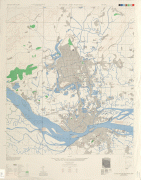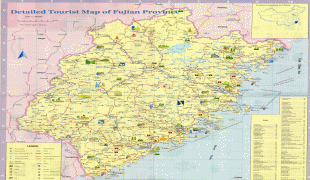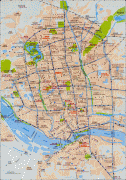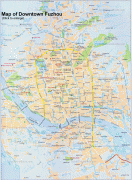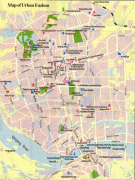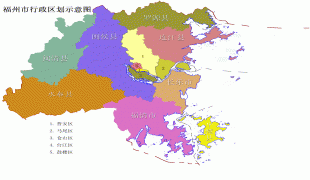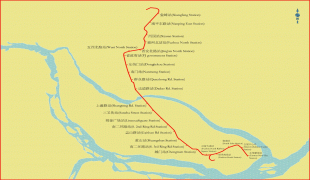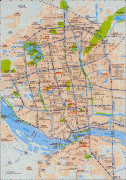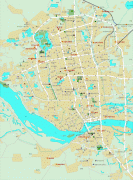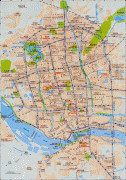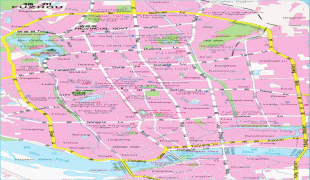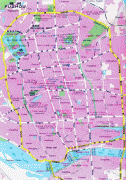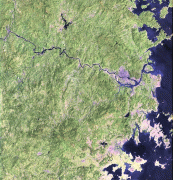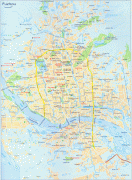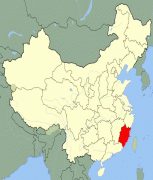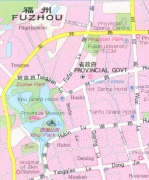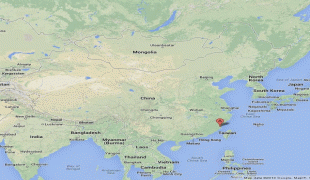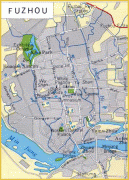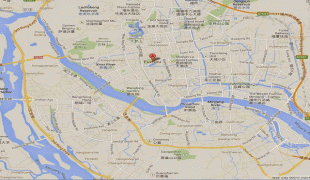Fuzhou
Fuzhou's population was 7,115,370 as of the 2010 Census. Like other prefecture-level cities in China, its administrative area contains both urban and rural areas: in 2010, 61.95% of inhabitants (4,408,076) were urban, while 38.05%(2,707,294) were rural. As of 31 December 2018, the total population was estimated at 7,740,000 whom 4,665,000 lived in the built-up (or metro) area made of 5 urban districts plus Minhou County. In 2015, Fuzhou was ranked as the 10th fastest growing metropolitan area in the world by Brookings Institution. Fuzhou is listed as No. 20 in China Integrated City Index 2016's total ranking, a study conducted by National Development and Reform Commission.
Fuzhou is also a major city for scientific research, appearing in the global top 50 cities as tracked by the Nature Index. The city is home to several major universities, notably Fuzhou University, one of China's key universities and other public universities, including Fujian Normal University and Fujian Agriculture and Forestry University.
Fuzhou is also known as "有福之州" in Chinese, meaning "a city of fortune". The Yuanhe Maps and Records of Prefectures and Counties, a Chinese geographical treatise published in the 9th century, says that Fuzhou's name came from Mount Futo a mountain northwest of the city. The mountain's name was then combined with -zhou, meaning "settlement" or "prefecture", in a manner similar to many other Chinese cities. During the Warring States period, the area of Fuzhou was sometimes referred to as Ye, and Fuzhou was incorporated into China proper during Qin dynasty. The city's name was changed numerous times between the 3rd and 9th centuries before finally settling on Fuzhou in 948. In Chinese, the city is sometimes referred to by the poetic nickname Rongcheng (Foochow Romanized: Ù ̤ ng-siàng),.
In older English publications, the name is variously romanized as Foochow, Foo-Chow, Fuchow, Fūtsu, Fuh-Chow, Hock Chew, and Hokchew.
Map - Fuzhou
Map
Country - China
 |
 |
| Flag of China | |
Modern Chinese trace their origins to a cradle of civilization in the fertile basin of the Yellow River in the North China Plain. The semi-legendary Xia dynasty in the 21st century BCE and the well-attested Shang and Zhou dynasties developed a bureaucratic political system to serve hereditary monarchies, or dynasties. Chinese writing, Chinese classic literature, and the Hundred Schools of Thought emerged during this period and influenced China and its neighbors for centuries to come. In the third century BCE, Qin's wars of unification created the first Chinese empire, the short-lived Qin dynasty. The Qin was followed by the more stable Han dynasty (206 BCE–220 CE), which established a model for nearly two millennia in which the Chinese empire was one of the world's foremost economic powers. The empire expanded, fractured, and reunified; was conquered and reestablished; absorbed foreign religions and ideas; and made world-leading scientific advances, such as the Four Great Inventions: gunpowder, paper, the compass, and printing. After centuries of disunity following the fall of the Han, the Sui (581–618) and Tang (618–907) dynasties reunified the empire. The multi-ethnic Tang welcomed foreign trade and culture that came over the Silk Road and adapted Buddhism to Chinese needs. The early modern Song dynasty (960–1279) became increasingly urban and commercial. The civilian scholar-officials or literati used the examination system and the doctrines of Neo-Confucianism to replace the military aristocrats of earlier dynasties. The Mongol invasion established the Yuan dynasty in 1279, but the Ming dynasty (1368–1644) re-established Han Chinese control. The Manchu-led Qing dynasty nearly doubled the empire's territory and established a multi-ethnic state that was the basis of the modern Chinese nation, but suffered heavy losses to foreign imperialism in the 19th century.
Currency / Language
| ISO | Currency | Symbol | Significant figures |
|---|---|---|---|
| CNY | Renminbi | ¥ or 元 | 2 |
| ISO | Language |
|---|---|
| ZH | Chinese language |
| UG | Uighur language |
| ZA | Zhuang language |






